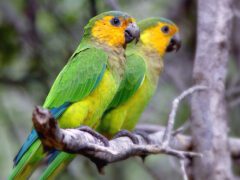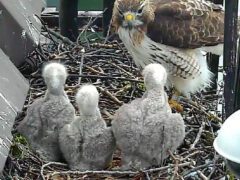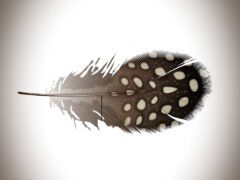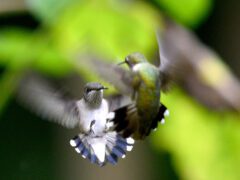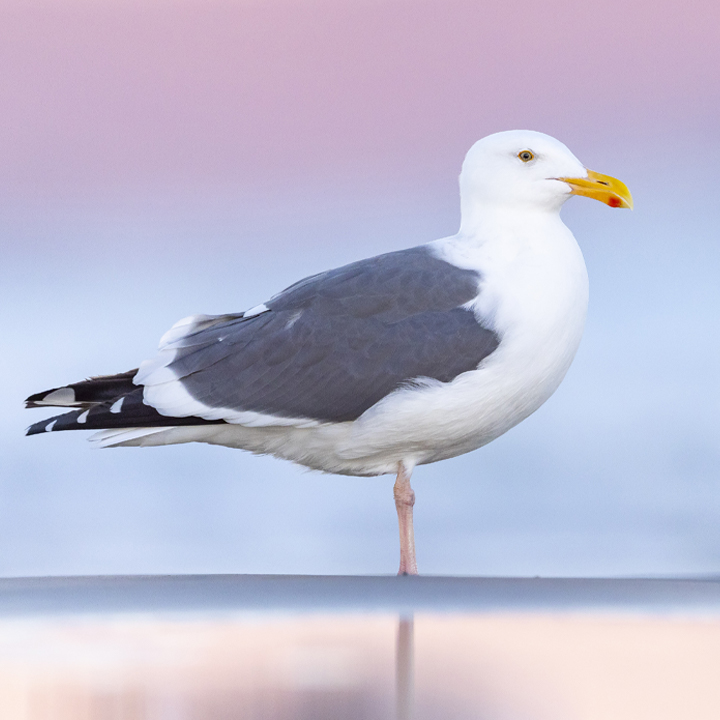Black-headed Gull Photo Gallery
Breeding adult
Adult in breeding plumage has a dark brown hood covering about two-thirds of the head, thin white crescents above and below the eye, pale gray upperparts, and white underparts. The legs and slender bill are both dark red.
© Lukasz Pulawski / Macaulay LibraryScotland, July 17, 2016Breeding adult
A medium-sized gull found across much of Europe and Asia. Often very common on beaches, in parks, and in other areas around people.
© Steve Kelling / Macaulay LibraryNidwalden, March 10, 2016A common species across much of Europe and Asia, often found in flocks. Adults in breeding plumage have a dark brown hood covering about two-thirds of the head, thin white crescents above and below the eyes, pale gray upperparts, white underparts, and dark red legs and bill.
© Josep del Hoyo / Macaulay LibraryCsongrád, April 30, 2015Not all videos have soundNonbreeding adult
Nonbreeding adult has dark smudging above and behind the eye and a dusky-tipped red bill.
© Shawn Billerman / Macaulay LibraryNew York, December 30, 2016Immature
Immature has two dark marks on the head, one above the eye and the other behind it. The back is pale gray, like an adult, but the wings show some brown feathers, like a juvenile. The legs are orange, and the bill is orange with a dark tip.
© Christoph Moning / Macaulay LibraryBayern, February 04, 2018Some pairs nest on emergent vegetation in shallow water, with others nesting on the ground among vegetation.
© Galatee Films / Macaulay LibraryMay 01, 2000Not all videos have soundJuvenile
Juvenile has mostly brown upperparts, with some lighter feathers and pale feather edging mixed in. The head has a hint of a hood, with two stronger marks in front of and behind the eye. White eye crescents are detectable at close range. The bill is bicolored, with a black tip. The legs are pinkish.
© Davey Walters / Macaulay LibraryWales, July 30, 2017Breeding adult
In flight, breeding adult’s underwing shows a white leading edge contrasting strongly with adjacent black primaries.
© Ian Davies / Macaulay LibraryNorrbottens län [SE-25], June 19, 2015Often gathers in flocks outside of the breeding season. Nonbreeding adults have dark smudges above and behind the eye. Immatures have brown coverts and tertials and a black band near the tip of the tail.
© Josep del Hoyo / Macaulay LibraryBaden-Württemberg, October 04, 2015Not all videos have soundNonbreeding adult
Adult in flight has a white leading edge on both the upperwing and underwing; the white on the upperwing is bordered by a black trailing edge.
© Nicole Desnoyers / Macaulay LibraryCalifornia, January 04, 2017Immature
In all plumages, the upperwing has a white leading edge bordered by a black trailing edge. Immature has the head and back pattern of an adult, and the wing and tail pattern of a juvenile (including brown upperwing coverts and a black band at the tip of the tail).
© Patrick J. Blake / Macaulay Libraryİstanbul, December 25, 2015Typically forages by walking and then seizing prey.
© Josep del Hoyo / Macaulay LibrarySkåne län [SE-12], September 27, 2015Not all videos have soundJuvenile
In all plumages, the upperwing has a white leading edge bordered by a black trailing edge. Juvenile has a brown back, dark tail band, bicolored bill, dusky head, and brown upperwing coverts.
© Jim Sweeney / Macaulay LibraryNorðurland eystra, July 09, 2014Flock
Black-headed Gulls nest in colonies and often gather in large flocks during the winter.
© Josip Turkalj / Macaulay LibraryGrad Zagreb, December 18, 2016Compare with Similar Species
Click on an image to compare
Species in This Family
Gulls, Terns, and Skimmers(Order: Charadriiformes, Family: Laridae)


































